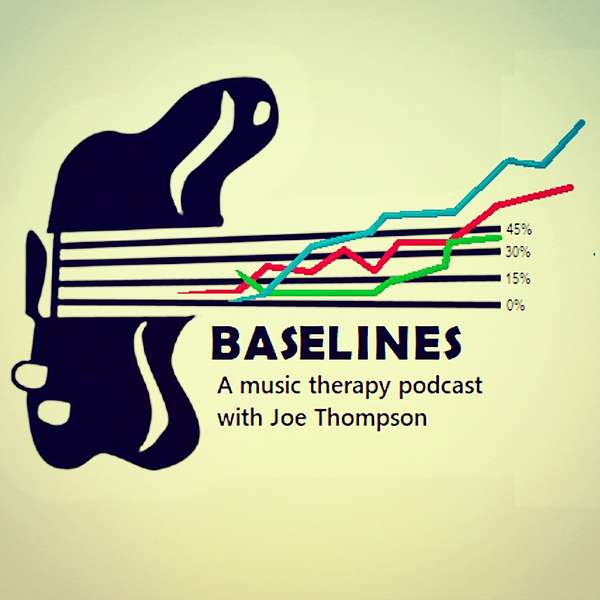
Baselines in Music Therapy
In therapy and music, the baseline informs our next steps. This is the show that examines the present state of music therapy and asks, 'where to from here?'.
Made on the lands of the Darug nation by Joe Thompson NMT-F.
Baselines in Music Therapy
Emma Bailey & Mary-Clare Fearn: international impressions
Today I speak with two UK-based music therapists about their journeys to Neurologic Music Therapy Services Of Arizona.
Emma Bailey is a UK-based Music Therapist and music therapy Supervisor. Originally trained at the Guildhall School of Music and Drama, Emma has studied infant mental health and child development at the Tavistock Clinic and the School of Infant Mental Health in London, and she completed the additional NMT training in 2019. As a Music Therapist in a National Health Child Development Service, as well as in private practice, Emma specialises in short-term interventions with children with significant developmental needs, and their parents or caregivers. Emma has been published in the British Journal of Music Therapy and has presented her work at the European Music Therapy Conference (EMTC2022). In addition to her music therapy practice, Emma also runs developmental music groups for pre-school children and their families in her local community.
Mary-Clare Fearn is an experienced clinician, trainer, and consultant within music therapy. She qualified from Roehampton UK in 1990 and since then, her clinical experience has been varied, including work with young people and adults with learning and physical disabilities, autism, brain injuries and children that are looked after or adopted and their families. Mary-Clare is an affiliate of the Academy of Neurologic Music Therapy and has expertise in blending approaches and supporting diverse groups of staff to develop their understanding and working practice, she is also a music therapy supervisor. She plays and sings in local amateur musical ensembles. Mary-Clare writes about her work and has presented at national and international conferences. Some notable publications are ‘Attachment theory and attachment difficulties: supporting autistic children and young people in residential school settings’ in Good Autism Practice, Volume 22, Number 2 (2021),‘Music and Attuned Movement Therapy’ in Collaboration and Assistance in Music Therapy Practice, London; Jessica Kingsley Publishers (2017), ‘Collaborative working at the Cheyne Day Centre, London’ in Integrated Team Working: Music Therapy as Part of Transdisciplinary and Collaborative Approaches, London; Jessica Kingsley Publishers (2008)
You can contact Emma at emmamusictherapist@protonmail.com or find her on X as @emmalisabailey
You can contact Mary-Clare at maryclaremusictherapist@aol.com
References for show notes:
- Fournier et al (2010) “Motor Coordination in Autism Spectrum Disorders: A Synthesis and Meta-Analysis” Journal of Autism and Developmental Disorders 40:1227–1240 DOI 10.1007/s10803-010-0981-3
- Donellan et al (2013) “Rethinking autism: implications of sensory and movement differences for understanding and support” Frontiers in Integrative Neuroscience Vol. 6. Article 124 doi: 10.3389/fnint.2012.00124
- Jansen & Thaut (2018) “Rethinking the role of music in the neurodevelopment of ASD” Music and Science Vol. 1 1-18. DOI: 10.1177/2059204318769639
